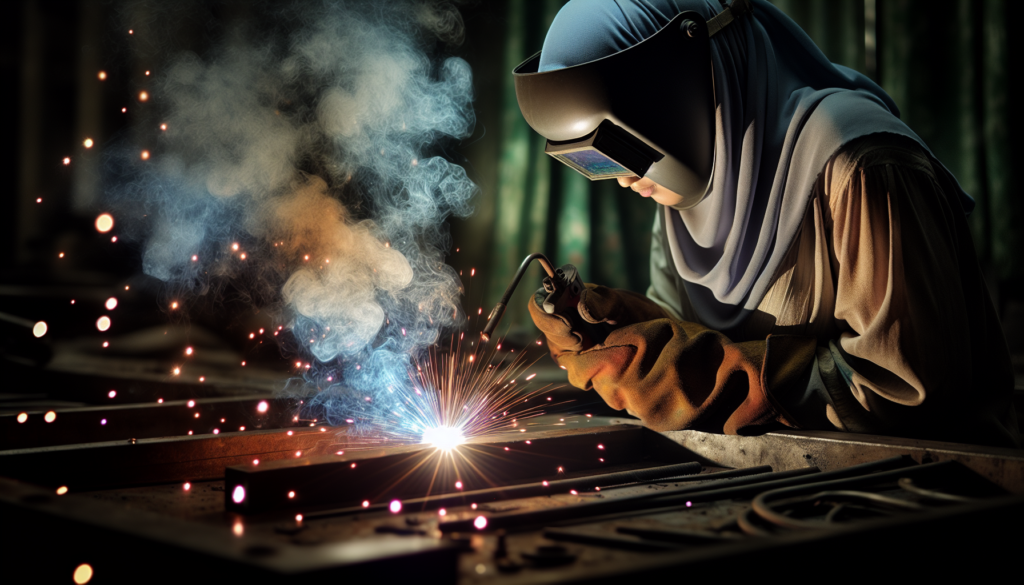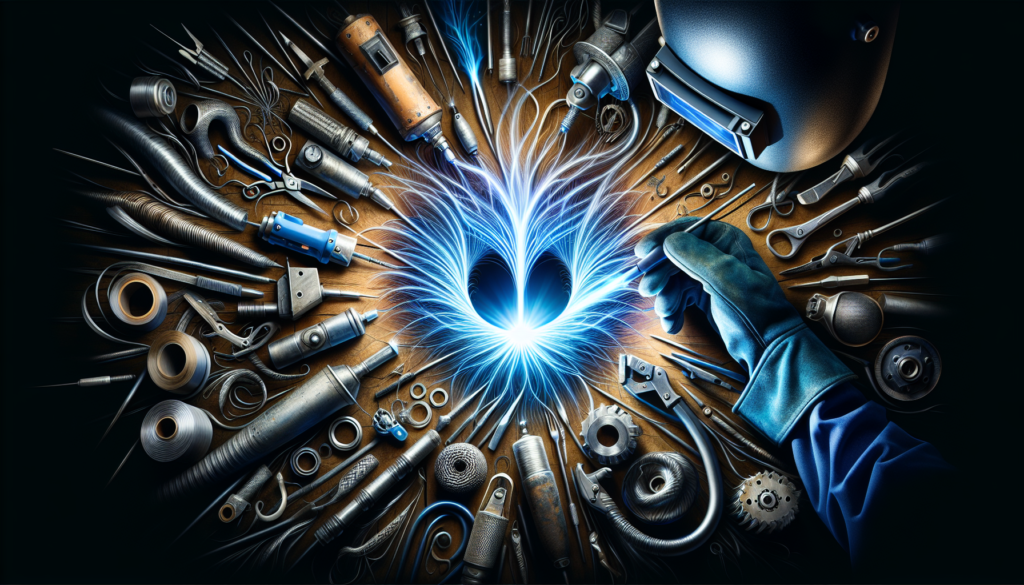Imagine being able to join metals together with precision and reliability. Enter Co Welding, a revolutionary technique that is changing the world of metal fabrication. This groundbreaking method combines cutting-edge technology with expert craftsmanship to create seamless and durable metal joints. Co Welding is an innovative solution for industries ranging from automotive to construction, providing a cost-effective and efficient way to bring together various metal components. Say goodbye to the challenges of traditional welding techniques and embrace the future of metal fabrication with Co Welding.
Co Welding
Welcome to the world of Co Welding! In this article, we will explore the definition, applications, advantages, and disadvantages of Co Welding. We will also dive into the different types of Co Welding, including Gas Metal Arc Welding (GMAW), Gas Tungsten Arc Welding (GTAW), Shielded Metal Arc Welding (SMAW), and Flux-Cored Arc Welding (FCAW). Additionally, we will discuss the necessary equipment and materials for Co Welding, as well as important safety precautions to keep in mind. So, let’s get started!

Definition
Co Welding, short for “Cooperative Welding,” is a welding technique that involves the collaboration and coordination of multiple welders. It is a highly efficient and effective method where two or more individuals work simultaneously to complete a welding task. The process requires a high level of synchronization and communication between the welders to ensure a successful outcome. Co Welding is commonly used in construction, fabrication, and manufacturing industries, among others.
Applications
Co Welding finds its applications in various industries and sectors. It is particularly useful in large-scale projects where the workload can be divided among multiple welders. Some common applications of Co Welding include shipbuilding, pipeline construction, structural steel fabrication, automotive manufacturing, and aerospace engineering.
The collaborative nature of Co Welding allows for increased productivity and faster project completion. By utilizing the skills and expertise of multiple welders, complex welding tasks can be efficiently executed, leading to improved quality and reduced production time.
Advantages
One of the significant advantages of Co Welding is the ability to distribute workload among multiple welders. This not only speeds up the welding process but also reduces the strain on individual welders, preventing fatigue and ensuring consistent quality throughout the project.
Co Welding also allows for the sharing of knowledge and expertise among welders. By working together, welders can learn from each other, exchange ideas, and implement innovative techniques. This collaborative learning environment enhances professional growth and improves the overall skillset of welders involved in Co Welding projects.
Moreover, Co Welding promotes teamwork and fosters a supportive work environment. The coordination required in Co Welding enhances communication skills and strengthens relationships among team members. This sense of camaraderie and mutual trust contributes to a positive work atmosphere, leading to increased job satisfaction and improved project outcomes.
Disadvantages
While Co Welding offers numerous advantages, it also presents certain challenges and disadvantages. One of the main issues with Co Welding is the need for rigorous planning and coordination. Successful Co Welding depends on effective communication and synchronized actions between welders. Any miscommunication or lack of coordination can lead to inefficiencies and errors in the welding process.
In addition, Co Welding may require additional resources, such as welding equipment and protective gear, to accommodate multiple welders. This can increase costs and logistics, especially for smaller projects or businesses with limited resources.
Moreover, the collaborative nature of Co Welding may not be suitable for all welding tasks. Some welding projects may require more specialized techniques or experienced welders who work independently. It is essential to assess the specific requirements of a welding project and determine if Co Welding is the most appropriate method.

Types of Co Welding
There are several types of Co Welding techniques commonly used in various industries. Let’s take a closer look at some of the most popular ones:
Gas Metal Arc Welding (GMAW)
Gas Metal Arc Welding, also known as MIG (Metal Inert Gas) Welding, is a Co Welding technique that uses a consumable electrode and a shielding gas to create an electric arc between the electrode and the workpiece. GMAW is known for its versatility and ease of use, making it a popular choice for welding in construction, automotive, and manufacturing industries.
Gas Tungsten Arc Welding (GTAW)
Gas Tungsten Arc Welding, commonly known as TIG (Tungsten Inert Gas) Welding, is a precise and controlled Co Welding method. It uses a non-consumable tungsten electrode and a shielding gas to create an electric arc. GTAW is often preferred for welding thin materials, stainless steel, and non-ferrous metals, thanks to its ability to produce high-quality welds with minimal spatter and distortion.
Shielded Metal Arc Welding (SMAW)
Shielded Metal Arc Welding, also called Stick Welding, is a Co Welding technique that utilizes a consumable electrode coated with flux. The electrode is manually fed into the weld pool, while the flux provides a protective shield and creates a slag to protect the weld zone. SMAW is versatile and widely used in construction, maintenance, and repair applications.
Flux-Cored Arc Welding (FCAW)
Flux-Cored Arc Welding is a Co Welding process similar to GMAW but uses a tubular wire filled with flux instead of a solid wire. The flux provides both a shielding gas and a source of additional alloying elements, resulting in improved weld quality and increased productivity. FCAW is commonly used in shipbuilding, construction, and heavy fabrication industries.
Equipment and Materials
To carry out Co Welding effectively, several essential equipment and materials are required. These include welding machines, welding electrodes, shielding gases, welding helmets, gloves, protective clothing, and safety goggles.
Welding machines, such as MIG welders, TIG welders, and stick welders, are vital for Co Welding. These machines provide the necessary electrical current and control for the welding process.
Welding electrodes, specific to the welding technique being used, are needed to create the arc and join the metal pieces together. Shielding gases, such as argon, helium, or a mixture, are employed to protect the weld pool from atmospheric contamination during the welding process.
Safety equipment, including welding helmets, gloves, protective clothing, and safety goggles, is paramount to ensuring the well-being of the welders. These protective gears shield the welders from sparks, UV radiation, flying debris, and potential welding hazards.

Safety Precautions
Working with Co Welding techniques requires adherence to strict safety precautions to prevent accidents and injuries. Here are some essential safety measures to follow:
-
Always wear appropriate personal protective equipment (PPE), including welding helmets, gloves, protective clothing, and safety goggles, to shield yourself from potential hazards.
-
Ensure proper ventilation in the welding area to disperse harmful fumes and gases produced during the welding process.
-
Follow the manufacturer’s instructions when operating welding machines and equipment to avoid malfunctions and unnecessary hazards.
-
Maintain a clean and organized workspace to minimize the risk of tripping and falling.
-
Keep flammable materials away from the welding area to prevent fires and explosions.
-
Regularly inspect and maintain welding equipment to ensure optimal performance and safety.
-
Train and educate all Co Welding team members on safety procedures and practices to mitigate risks.
By implementing these safety precautions, you can create a secure working environment for Co Welding projects, protecting both yourself and your fellow welders.
In conclusion, Co Welding is a collaborative welding technique that offers many advantages, such as increased productivity, shared knowledge, and a positive work environment. However, it also poses challenges, requiring careful planning and coordination. By understanding the different types, equipment, and safety precautions associated with Co Welding, you can effectively harness its potential for successful welding projects. So, put on your protective gear, get your welding machines ready, and embrace the power of Co Welding!
